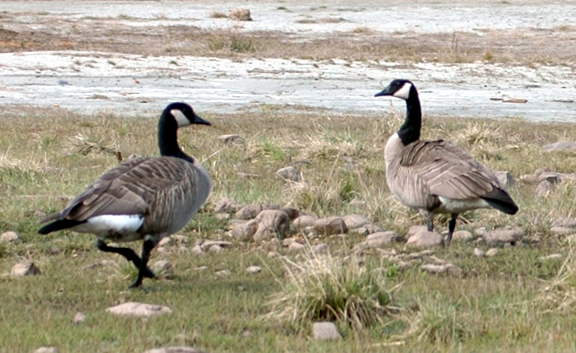
![]()

Photo 1: Canada Geese at Buttle Lake.
Canada Goose: Branta canadensis
Easily identified by its black head and white chin, Canada Geese are a common sight throughout Vancouver Island. Normally, a migratory bird, Canada Geese have become resident in many places adapting to human habitation such as golf courses and parks. Worldwide, resident populations now far outnumber migratory populations.
Most Canada Geese mate for life. They also usually return to the same nesting location each year. Canada Geese usually lay 2-8 eggs in what is called a clutch. They have one clutch per year unless the clutch is lost to a predator, then they may produce another clutch. Both parents guard the nest, though the female will spend more time with the eggs. In the summer, geese lose their flight feathers for a period every year. During this time, they cannot fly and are forced to camp out. It is also when they tend to be the most aggressive as they are protecting their young.
Canada Geese are herbivores. They graze on a wide variety of plant material but especially enjoy grasses.
Other Vancouver Island Birds: Bald Eagle, Trumpeter Swan, Blue Grouse, Common Merganser, American Wigeon, Long-tailed Duck, Surf Scoter, Mallard, Bufflehead, Sharp-shinned Hawk, Varied Thrush
